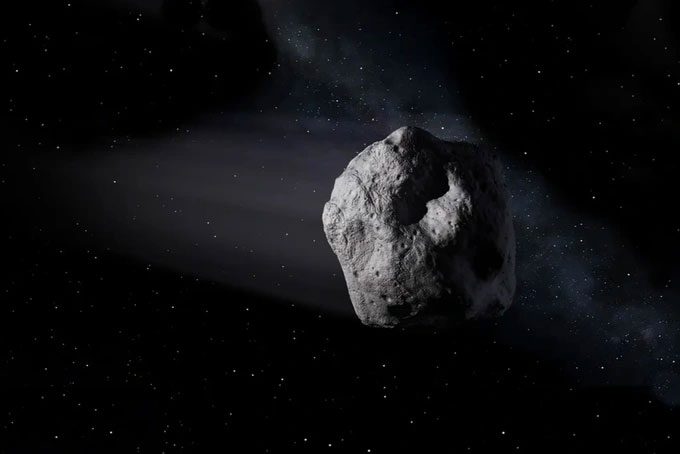A meteorite weighing 646 grams once left our planet, flew into outer space, and somehow ended its extraordinary journey back on Earth.
A yet-to-be-published study by scientists at the French National Centre for Scientific Research may surprise you with the journey of a black rock discovered in Morocco in 2018.
According to the study, the rock officially named “Northwest Africa (NWA) 13188” is believed to have been ejected from Earth and into space.

A mysterious rock has undergone an extraordinary journey after being launched into space and returning to Earth. (Illustration: Getty).
According to the French National Centre for Scientific Research, “this boomerang rock” weighing 646 grams may have been launched from Earth due to volcanic activity. Its crystal structure and chemical composition align with this assessment, possessing a mixture of oxygen isotopes and several trace elements.
After its extraordinary journey in space, the structure of the rock changed. It contains a significant amount of Helium-3, Beryllium-10, and Neon-21, the researchers noted. These are radiations found in outer space but largely blocked by Earth’s magnetic field.
Although the concentration of these isotopes is lower compared to other meteorites, it is still significantly higher than that of rocks originating from Earth. This opens up the possibility that “NWA 13188” may have been exposed to cosmic rays for several tens of thousands of years.
“We consider NWA 13188 to be a meteorite. It was launched from Earth and then returned,” the research team concluded. The rock could have initially been larger; however, it partially melted upon entering Earth’s atmosphere.

Close-up of the rock believed to have “traveled” in space for tens of thousands of years before returning to Earth. (Photo: Meteorological Society).
However, the unpublished study has not convinced all experts in the field.
Planetary scientist Philippe Claeys refuted the above conclusion due to insufficient evidence regarding the origin of the strange rock. He stated: “When you make extraordinary claims, you need extraordinary evidence to support them. I am still not convinced.”
Additionally, several arguments have questioned the ability of a volcano to launch rocks into space.
According to calculations by Phys, for a rock to enter orbit, it would need to be ejected from a volcano at speeds of tens of thousands of kilometers per hour. However, this is unlikely, as it is significantly higher than the average speed at which most rocks travel.
Moreover, the tallest volcanic smoke columns typically only reach about 31 – 45 km from Earth’s surface, making it impossible for volcanic activity to launch rocks into space.
Another hypothesis has been proposed. Analysts suggest that the impact of an asteroid may have generated enough force to catapult the rock “backward” into space.
In fact, some collisions between Earth and asteroids can produce enough force to send debris into space. Such a rock was found on the Moon during the Apollo 14 mission in 1971.
- China creates an unbeatable “super machine”: Weighing 1,900 tons, capable of digging 350 meters underground in just one month
- Strange custom: Brides cry for one hour a day for a month before the wedding in China
- Burial space for the deceased costs over 1.2 billion VND: Space no larger than a shoebox, more expensive than housing for the living


















































